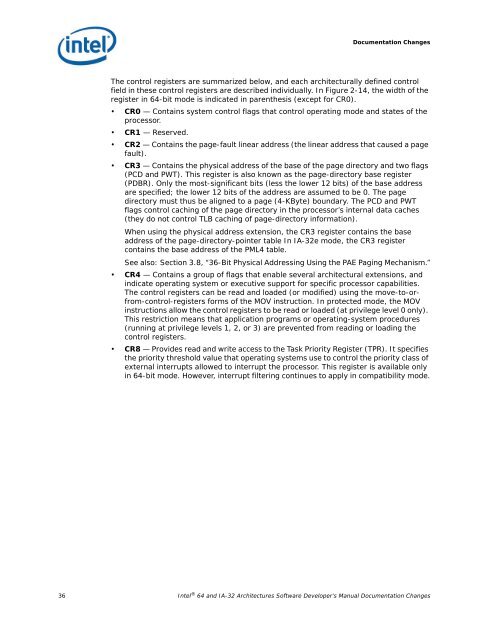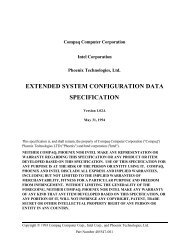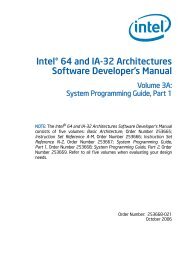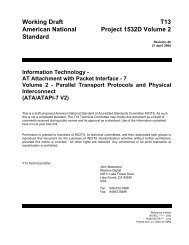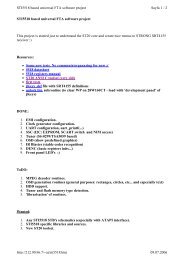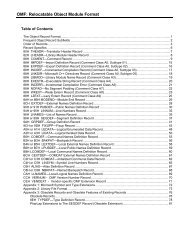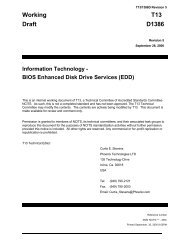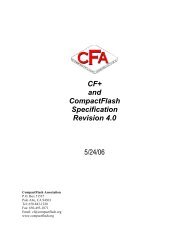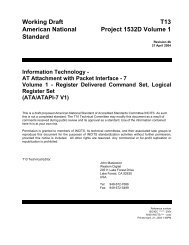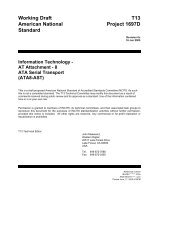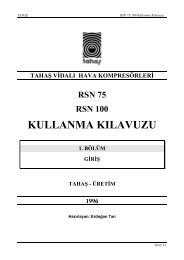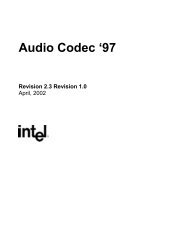Intel 64 and IA-32 Architectures Software Developer's Manual
Intel 64 and IA-32 Architectures Software Developer's Manual
Intel 64 and IA-32 Architectures Software Developer's Manual
Create successful ePaper yourself
Turn your PDF publications into a flip-book with our unique Google optimized e-Paper software.
Documentation Changes<br />
The control registers are summarized below, <strong>and</strong> each architecturally defined control<br />
field in these control registers are described individually. In Figure 2-14, the width of the<br />
register in <strong>64</strong>-bit mode is indicated in parenthesis (except for CR0).<br />
• CR0 — Contains system control flags that control operating mode <strong>and</strong> states of the<br />
processor.<br />
• CR1 — Reserved.<br />
• CR2 — Contains the page-fault linear address (the linear address that caused a page<br />
fault).<br />
• CR3 — Contains the physical address of the base of the page directory <strong>and</strong> two flags<br />
(PCD <strong>and</strong> PWT). This register is also known as the page-directory base register<br />
(PDBR). Only the most-significant bits (less the lower 12 bits) of the base address<br />
are specified; the lower 12 bits of the address are assumed to be 0. The page<br />
directory must thus be aligned to a page (4-KByte) boundary. The PCD <strong>and</strong> PWT<br />
flags control caching of the page directory in the processor’s internal data caches<br />
(they do not control TLB caching of page-directory information).<br />
When using the physical address extension, the CR3 register contains the base<br />
address of the page-directory-pointer table In <strong>IA</strong>-<strong>32</strong>e mode, the CR3 register<br />
contains the base address of the PML4 table.<br />
See also: Section 3.8, “36-Bit Physical Addressing Using the PAE Paging Mechanism.”<br />
• CR4 — Contains a group of flags that enable several architectural extensions, <strong>and</strong><br />
indicate operating system or executive support for specific processor capabilities.<br />
The control registers can be read <strong>and</strong> loaded (or modified) using the move-to-orfrom-control-registers<br />
forms of the MOV instruction. In protected mode, the MOV<br />
instructions allow the control registers to be read or loaded (at privilege level 0 only).<br />
This restriction means that application programs or operating-system procedures<br />
(running at privilege levels 1, 2, or 3) are prevented from reading or loading the<br />
control registers.<br />
• CR8 — Provides read <strong>and</strong> write access to the Task Priority Register (TPR). It specifies<br />
the priority threshold value that operating systems use to control the priority class of<br />
external interrupts allowed to interrupt the processor. This register is available only<br />
in <strong>64</strong>-bit mode. However, interrupt filtering continues to apply in compatibility mode.<br />
36 <strong>Intel</strong> ® <strong>64</strong> <strong>and</strong> <strong>IA</strong>-<strong>32</strong> <strong>Architectures</strong> <strong>Software</strong> Developer’s <strong>Manual</strong> Documentation Changes


